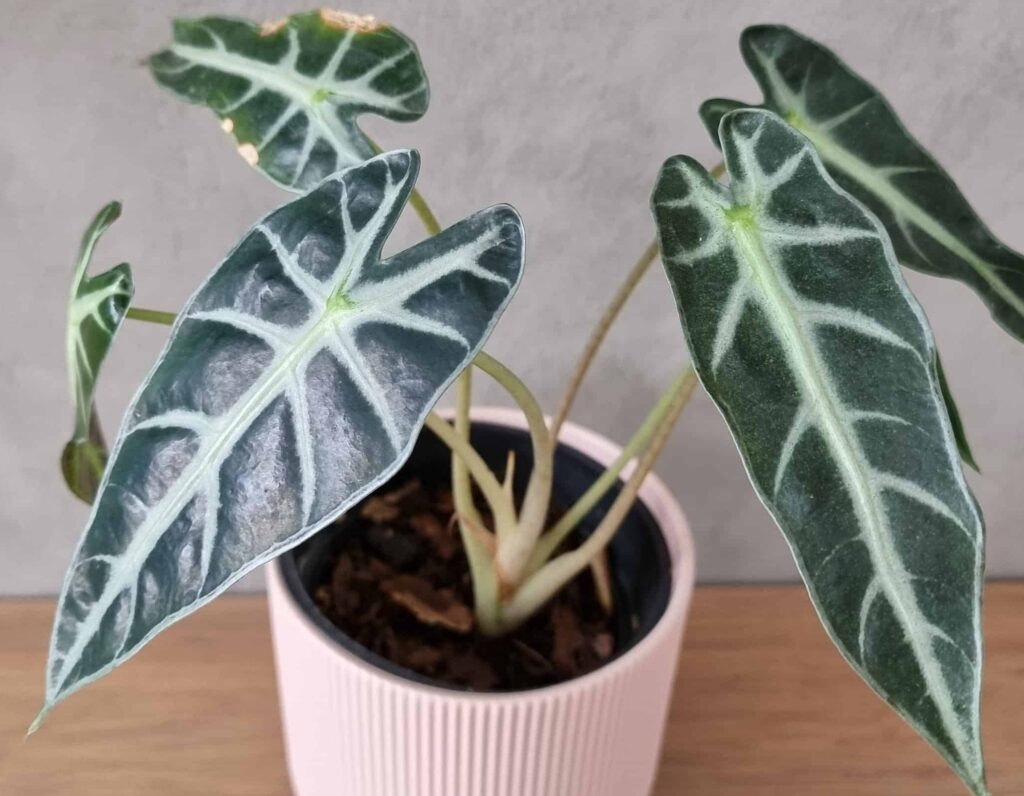Houseplants are growing in popularity, which includes the beautiful and bright green fiddle leaf fig, but did you know there are two varieties? These stunning houseplants grow well in light areas and are both wild and contained.
So, what is the difference between a fiddle leaf fig and a bambino plant, and how do you take care of them? Keep reading to discover more.
What is the Difference Between a Fiddle Leaf Fig and a Bambino?

Bambino plants are a smaller variety of fiddle leaf figs.
©Helza Nitrisia/Shutterstock.com
First things first, fiddle leaf figs and bambino plants are the same plant/species. Instead, bambino plants are a smaller variety of fiddle leaf figs. Fiddle leaf fig and bambino are both ficus lyrata and are classified as Moraceae, a family of flowering fig plants. The main difference between fiddle leaf figs and bambino plants is their height. Bambinos are often referred to as dwarf fiddle leaf figs and are great for small spaces. This plant is easy to grow indoors in a light room with strong lighting, but not direct sunlight.
Fiddle leaf figs grow 50 feet outdoors and up to 10 feet indoors. The leaves are separate and large. In their natural environment, they also produce flowers and edible fig fruit. Bambino plants, on the other hand, stop growing at about 3 feet. The leaves are also half the size of a fiddle leaf fig and grow in clusters, giving the small plant a bushy appearance. Fiddle leaf figs are originally from West Africa but can be grown anywhere in the world indoors.
The Benefits of Owning a Fiddle Leaf Fig and Bambino Plant

Fiddle leaf figs and bambinos have air purifying properties, potentially providing cleaner air.
©sharohyip/Shutterstock.com
Fun fact, fiddle leaf fig and bambino plants offer many benefits for owners. One of the main benefits is that fiddle leaf figs and bambinos have air purifying properties, potentially providing cleaner air. During the process of photosynthesis, these plants exchange gas through their roots and leaves, including chemicals and toxins in the air. Another benefit is how easy these plants are to care for! They are great for beginner gardeners that want to add some life to their small spaces.
Did you know you can also make money selling fiddle leaf fig and bambino plants? These plants are expensive and hard to come by, but once you have your own, it is easy to propagate the plant and create multiple clones. Fiddle leaf figs and bambino plants can also improve a person’s mental health by providing the person with something easy to do within their home. They are therapeutic and calming, and they grow quickly!
How Long Do Fiddle Leaf Figs vs Bambino Plants Live?

Fiddle leaf figs live longer outdoors since they have space to grow and are hardened with exposure to
bugs
and illnesses.
©iStock.com/Olga Peshkova
Fiddle leaf figs live longer outdoors since they have space to grow and are hardened with exposure to bugs and illnesses. Fiddle leaf figs can live 25 to 50 years outside, sometimes producing flavorless and dry figs. While other fig fruits are sweet, these are leathery and often not consumed, but they are not toxic. What about indoor fiddle leaf figs? When grown indoors, they rarely live past 15 years old. Actually, sometimes bambino and fiddle leaf figs die within 1 to 5 years because of diseases, a lack of lighting, or too much water (root rot).
Tips and Tricks on Growing Fiddle Leaf Fig vs Bambino
Sometimes bambino plants are mislabeled as regular fiddle leaf figs, but as they age, the differences are obvious. Thankfully, these plants are easy to grow and care for. In one year, fiddle leaf figs grow between 12 to 15 inches. Listed below are great tips and tricks on how to grow fiddle leaf fig vs bambino plants!
- Fiddle leaf figs and bambino plants need at least 6 hours of indirect sunlight every day. If you don’t have enough exposure, you can always purchase a grow light.
- These plants do not require a lot of water. The best way to check is to stick a finger into the dirt and water if the top layer (2-3 inches) is dry.
- When watering your plant, use lukewarm water. If the water is cold, it can shock your plant’s roots leading to dropped leaves.
- Once in a while, get a microfiber towel and gently wipe the leaves. When the leaves accumulate too much dust, they can struggle to get enough sunlight.
- Repot at least once a year, especially if you notice the roots climbing above the dirt.
Up Next:
- Century Plant vs Agave: Is There a Difference?
- Boston Ivy vs English Ivy: What Are The Differences?
- Discover 10 Resilient Plants That Can Thrive in a Desert
The photo featured at the top of this post is © iStock.com/Olga Peshkova
Thank you for reading! Have some feedback for us? Contact the AZ Animals editorial team.







